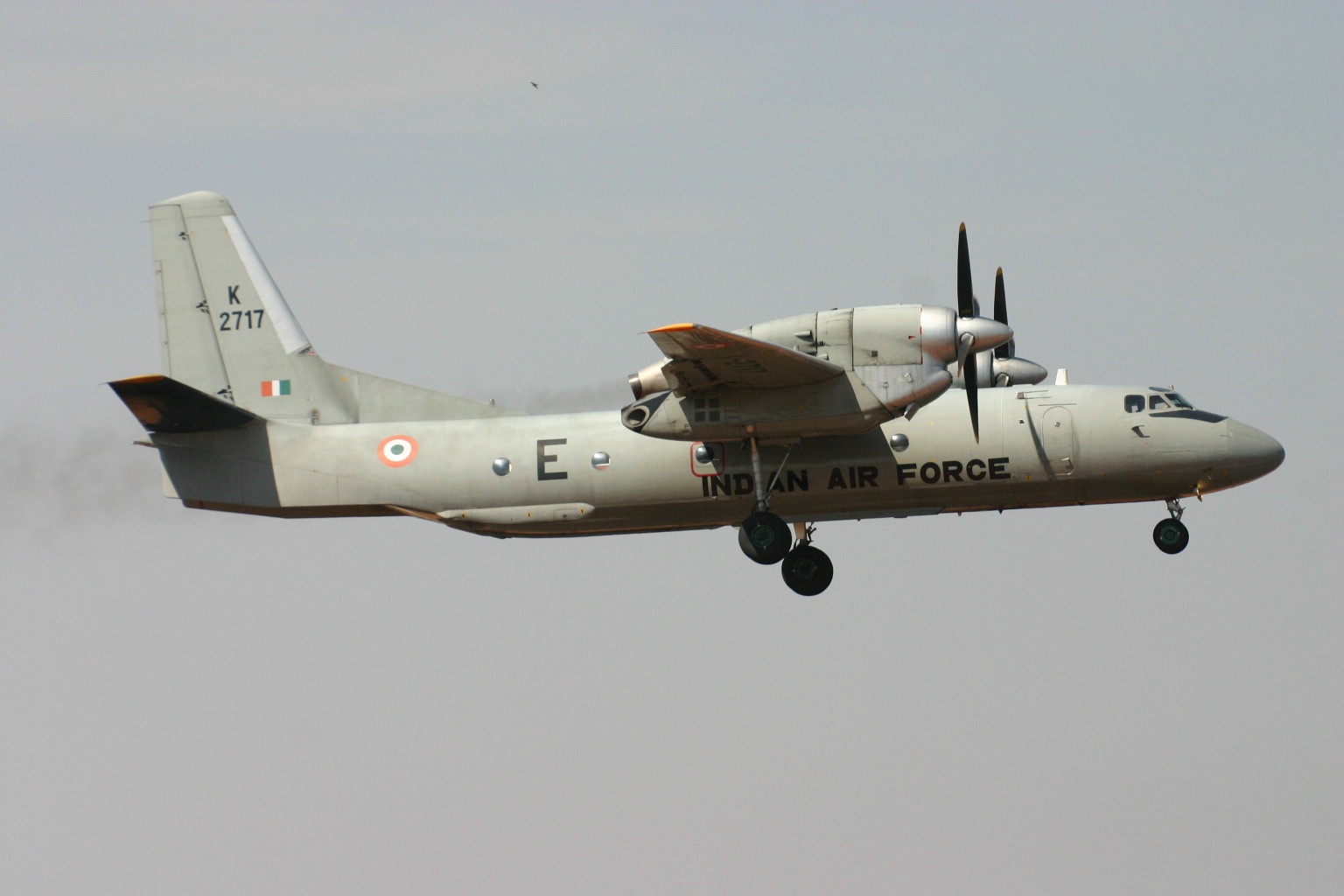
IAF’s latest Antonov-32 aircraft tragedy

The Indian Air Force (IAF) has in all probability, lost another Antonov-32 transport aircraft which has been missing since the afternoon of June 03, 2019, in the north eastern region along with 13 IAF personnel flying on board the ill-fated aircraft. The aircraft which took off from Air Force Station, Jorhat in Assam at 12:25 hours, was headed to the advanced landing ground at Mechuka, Arunachal Pradesh. Speculation is that the aircraft has possibly crashed killing all the members on board.The two possible reasons for the loss of the An-32 could be attributed either to human error or technical failure.
Reason for the crash
One possible cause for the loss could be structural failure which resulted in separation of one of the wings that would have made the aircraft go into a steep spiral with rapid loss of height. This could happen if a fire had developed in the engine on that side that was not controlled by the integral fire extinguisher.
In this situation, there is little, the crew could have done to regain control of the aircraft. Only when the wreckage of the An-32 is located and the Black Box recovered, would the IAF be able to unravel the mystery behind this disaster.
The Black Box which comprises the flight data recorder and the cockpit voice recorder would provide data of the final moments prior to the crash. It would help to reconstruct the profile of the ill-fated mission which can then be analysed.
At this point in time, one can only speculate on the possible cause of the crash. It appears that the crash could not be attributed to pilot error, but in all likelihood to technical failure.
The Antonov-32 tactical transport aircraft carries a payload of 7.5 tonnes or 50 passengers or 42 paratroopers. The aircraft is a re-engined An-26 aircraft, designed specifically for the IAF, in the heydays of the Indo-Soviet relationship, synonymous with sale of military technology platforms. This sturdy aircraft is designed to withstand adverse weather conditions better than An-26.
The estimated price for a modernised An-32 version would be around $15 million. During the mid-1980s, the IAF procured 110 An-32 aircraft from the former Soviet Union. These aircraft are used to para-drop soldiers and supplies, as also in communication roles to transport personnel across the country.
Today, the 100 odd An-32 aircraft in service with the IAF have flown for over 30 years. In order to ensure that these aircraft remain airworthy after logging thousands of flying hours, they are being put through mid-life upgrade for extension of service life.
The upgrade was approved in 2010 and 40 aircraft were sent to the original equipment manufacturer at Kiev, Ukraine and inducted into squadron service with the IAF by 2014. The remainder aircraft are under upgrade at the IAF base repair depot, Kanpur in collaboration with Hindustan Aeronautics Ltd.
The political and military turmoil in Ukraine with Russia’s annexation of the Crimean Peninsula has partially delayed the aircraft upgrade. This mid-life upgrade strengthens the air-frame structure which includes the fuselage, wings and tail plane. The upgrade also includes fitment of more powerful engines and modern avionics for ease of navigation.
Previous accidents involving An-32
The late wing commander UM Bheemaiah who was ferrying a brand new An-32, from Ukraine in the erstwhile Soviet Union, to India, went missing somewhere over the Arabian Sea in March 1986. The tragedy took the lives of seven aircrew members and the wreckage was never found. This was the IAF’s first fatal An-32 casualty.
In 1990, another IAF An-32 aircraft crashed, into Kerala’s Ponmudi Mountain range enroute to Thiruvananthapuram. Again in June 2009, an IAF An-32 crashed in Arunachal Padesh which killed all 13 personnel on board.
The last tragedy occurred in July 2016 when an IAF An-32 flying from Chennai to Port Blair went missing with 29 people on board. The aircraft presumably crashed into the Arabian Sea.
In all, the IAF has lost around eight or nine An-32 aircraft in accidents over land with two over the sea. The latest An-32 crash highlights that a midlife upgrade can only extend an aircraft’s life by around 10 years and no aerial platform can continue to fly on and on without an end in sight. For instance, the IAF decommissioned the MiG-25 supersonic interceptor and reconnaissance aircraft in 2006.
Suitable replacement
Clearly therefore the time has come for the IAF to decommission the An-32 and procure new aircraft to replace the older ones which pose a risk to the aircrew. Plans to replace the An-32 fleet with the MTA that was to be developed by Russia in collaboration with HAL, unfortunately did not materialise.
At this point in time, the IAF does not seem to have any definite plans to replace this fleet. Among the transport aircraft that can be a suitable replacement of the An-32 is the Airbus C-295 which can carry a 9.5 ton payload with a rear loading facility similar to that of the An-32.
The Airbus C-295 has been selected to replace the IAF’s ageing fleet of 56 Avro medium lift transport aircraft. The C-295 is planned to be manufactured at a new facility to be set up in Hyderabad by Tata Advanced Systems Ltd in collaboration with Airbus.
Apart from the IAF, the Border Security Force needs six C-295 aircraft taking the total to 62 aircraft. However, if this platform is selected to replace the An-32 fleet in due course, the total order for the C-295 would go up to nearly 200 aircraft.
This would make the new joint venture in the private sector of the Indian aerospace industry truly viable. The contract is , however, yet to be inked; but is expected to happen soon.
(The writer is a Professor of International Relations and Strategic Studies at the Christ Deemed to be University, Bengaluru)

